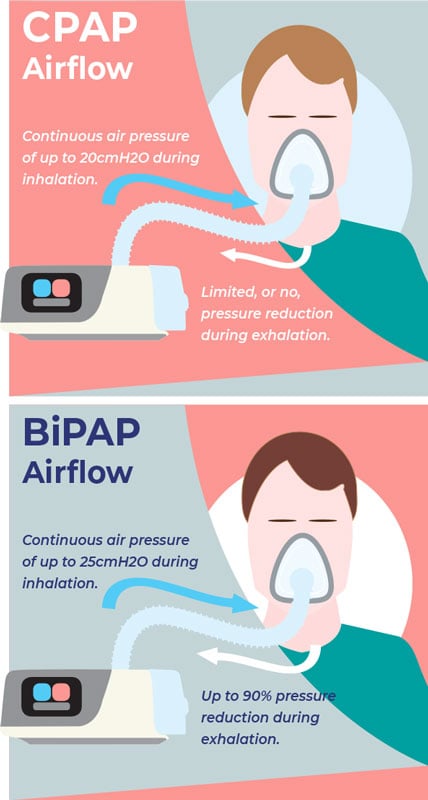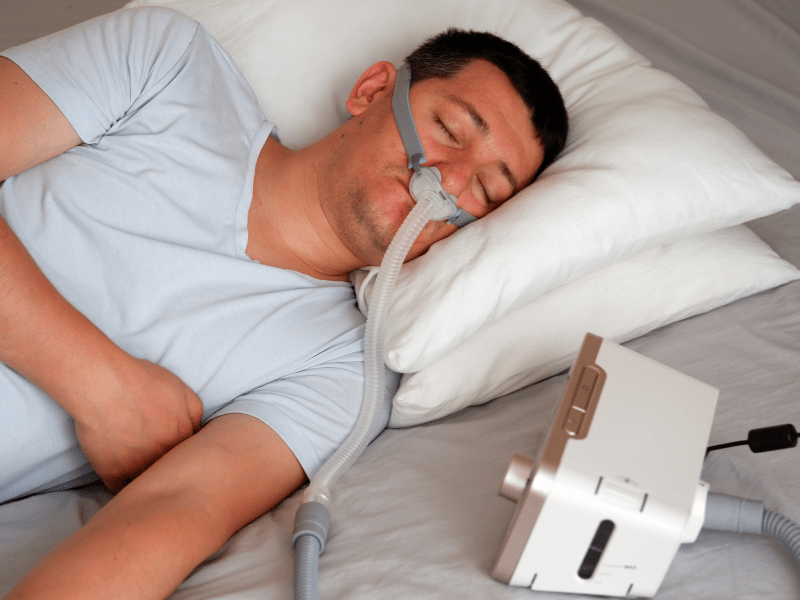Advantages of Going With BiPAP Rental for Home Treatment
Advantages of Going With BiPAP Rental for Home Treatment
Blog Article
Bipap vs. CPAP: Which Is the very best for Your Rest Disorder?
When navigating the intricacies of sleep problems, the selection in between BiPAP and CPAP treatment is an essential factor to consider. Each technique uses unique advantages tailored to specific problems, yet the decision hinges on individual person needs and comfort degrees. While CPAP gives a stable air flow suitable for obstructive rest apnea, BiPAP's double pressure settings may boost convenience for those with more complex respiratory concerns. Recognizing these distinctions can significantly impact treatment efficacy, leaving one to consider which alternative really straightens with their health requirements and lifestyle.
Recognizing Rest Disorders
Sleep problems incorporate a series of conditions that interrupt regular rest patterns, influencing both the quality and period of remainder. These disorders can manifest in numerous forms, consisting of sleeping disorders, rest apnea, narcolepsy, agitated leg syndrome, and parasomnias. Each problem provides distinct obstacles, usually bring about considerable daytime tiredness, cognitive disability, and emotional disruptions.
Sleeping disorders is identified by trouble dropping or staying asleep, while rest apnea entails repeated disruptions in breathing throughout sleep, commonly leading to fragmented rest. Narcolepsy, on the other hand, is marked by excessive daytime sleepiness and unexpected rest attacks. Troubled leg syndrome triggers uncomfortable feelings in the legs, prompting an irrepressible impulse to move them, which can likewise hinder the capability to drop off to sleep.
The influence of rest problems extends beyond specific health and wellness, affecting total productivity, partnerships, and lifestyle. Understanding the details nature of each condition is essential for reliable medical diagnosis and therapy. As rest health ends up being significantly identified as a crucial part of overall health, addressing these problems is necessary for improving both sleep quality and daily performance.
How CPAP Functions
Continuous Favorable Airway Stress (CPAP) therapy is often employed as a main treatment for obstructive rest apnea (OSA) The mechanism of CPAP entails making use of a machine that delivers a steady stream of air via a mask used throughout sleep. This air movement keeps favorable stress in the air passage, stopping the collapse or obstruction of the throat that can occur during sleep.
When a person takes a breath in, the CPAP machine gives a continual flow of air, making certain that the respiratory tract remains open - BiPAP Rental. This not only alleviates the symptoms of OSA, such as snoring and interfered with rest patterns, yet also decreases the involved health and wellness risks, consisting of cardio difficulties and daytime tiredness
The pressure setups on a CPAP machine can be personalized to fulfill individual patient demands, often determined with a rest research. Overall, CPAP therapy has been shown to substantially enhance the quality of sleep and total health and wellness for people suffering from obstructive sleep apnea.
Exactly How BiPAP Functions
BiPAP, or Bilevel Positive Respiratory Tract Pressure, is a specialized kind of non-invasive ventilation that is especially helpful for people with conditions such as complicated sleep apnea or breathing conditions. Unlike CPAP, which delivers a continuous stream of air at a single pressure, BiPAP provides two distinctive stress settings: a higher inspiratory stress for inhalation and a reduced expiratory stress for exhalation. This dual-pressure technique permits simpler breathing, minimizing the effort required during exhalation.
The gadget runs through a mask fitted over the nose or mouth, linked to an equipment that produces atmospheric pressure. When the individual inhales, the device delivers the higher pressure to aid with air flow, making sure that the air passage remains open. Upon exhalation, the machine immediately lowers the stress, making it extra comfortable for the patient to take a breath out.

Trick Differences Between BiPAP and CPAP

In comparison, BiPAP (Bilevel Positive Air passage Pressure) supplies two different pressure settings: one for inhalation and a reduced one for exhalation. This twin pressure system permits more comfortable breathing, especially for patients that struggle with breathing out versus a site here constant stress. BiPAP is commonly advised for individuals with complicated sleep apnea, chronic obstructive pulmonary condition (COPD), or those who need additional support during rest.
In addition, the intricacy of BiPAP devices generally leads to a higher expense and calls for a lot more mindful titration than CPAP. BiPAP Rental. Understanding these essential distinctions can help in acknowledging which gadget may be extra ideal for certain sleep problems, establishing the groundwork for informed treatment decisions
Picking the Right Therapy
The choice in between BiPAP and CPAP therapy primarily pivots on the specific features of the sleep problem, the person's general health and wellness, and their comfort with the tool. CPAP, which supplies a continual stream of air, is generally recommended for obstructive rest apnea (OSA)
Conversely, BiPAP offers 2 levels of pressure: one for breathing and a reduced one for exhalation. This dual stress system is valuable for people with complex rest apnea or those that experience problem breathing out against a constant stress. Furthermore, BiPAP is commonly advised for individuals with respiratory system conditions, such as chronic obstructive pulmonary condition (COPD), where differing pressure setups can enhance comfort and conformity.
Ultimately, a complete assessment by a rest professional, consisting of a sleep research, can assist identify which therapy straightens finest with the patient's requirements. Variables such as convenience, ease of usage, and details medical conditions need to likewise be considered to maximize treatment end results.
Final Thought
In recap, both BiPAP and CPAP offer unique functions in the administration of sleep problems. CPAP is reliable for obstructive rest apnea with constant air flow, while BiPAP uses dual pressure setups that enhance comfort for those with intricate rest apnea or respiratory system concerns. The option between these treatments must be assisted by specific needs and conditions, demanding a comprehensive assessment by a sleep professional to make sure optimum therapy results and enhanced high quality of sleep.

Generally, CPAP therapy has actually been revealed you could check here to dramatically improve the top quality of rest and general health and wellness for individuals enduring from obstructive sleep apnea.
BiPAP is commonly recommended for patients with intricate rest apnea, persistent obstructive lung condition (COPD), or those that require added assistance during rest.
CPAP is effective for obstructive sleep apnea via regular airflow, while BiPAP provides double stress setups that boost comfort for those with complicated sleep apnea or respiratory issues.
Report this page